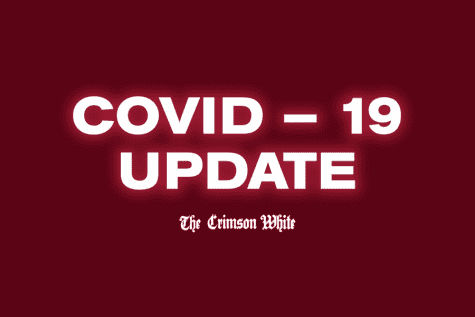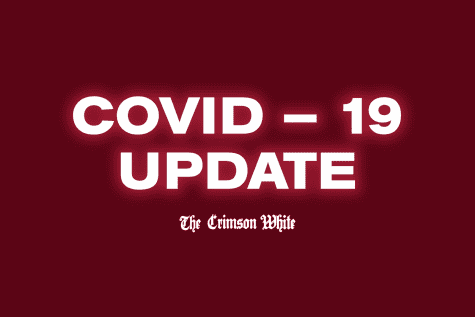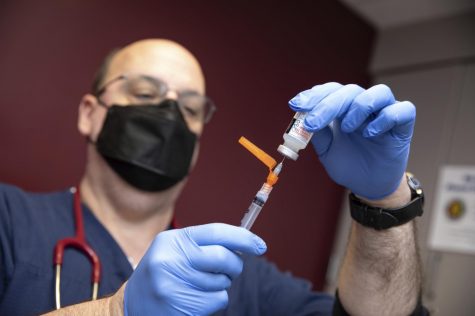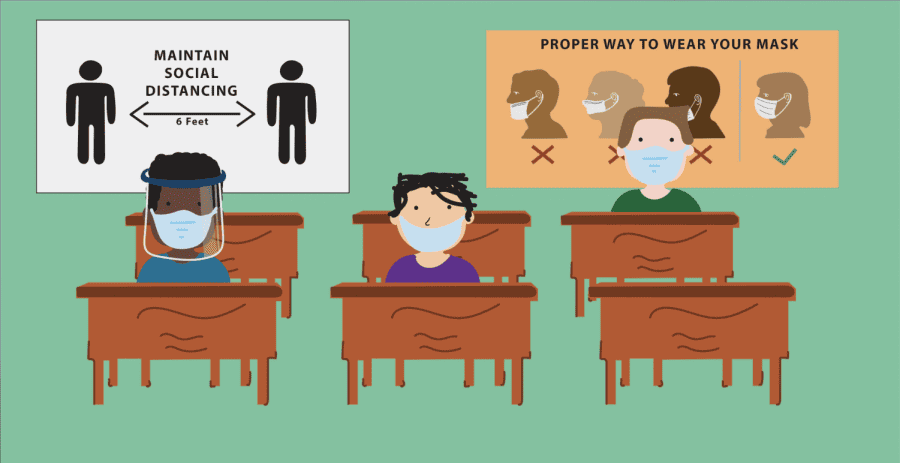More cases, fewer exemptions: UA prepares for full return for spring term
Cases are rising in Tuscaloosa, but administrators are still holding on to plans for an in-person return.
Despite an increase of COVID-19 cases on campus in the semester’s final week of in-person classes, UA Chief Administrative Officer Chad Tindol confirmed plans for increased on-campus operations in the spring.
All faculty and staff will return to Tuscaloosa on Jan. 7, and students will return the following week. Only those with an approved medical exemption will continue working or learning remotely.
UA spokesperson Deidre Stalnaker clarified the terms in which campus members can qualify to stay home. Campus employees (including student workers and graduate assistants) who are members of a ‘vulnerable population’ and at higher risk for severe illness from COVID-19, or employees who share a household with or have primary care responsibility for someone who is in the vulnerable population, should complete the online form to request temporary, COVID-19 accommodations for Spring 2021, Stalnaker said in an email. Employees younger than 65 will be required to complete a medical inquiry form to be reviewed by human resources staff.
The hybrid model of instruction used in the fall term provided online options for those who felt unsafe returning to campus. But with stricter requirements for medical exemptions in the spring, this announcement left campus members with limited options.
“There’s no reason for [UA] to make staff return to campus when they can do their jobs remotely,” Safe Return UA tweeted. “Every organization representing workers at UA ([Professional Staff Assembly, Office, Clerical, and Technical Staff Assembly], Faculty Senate) have asked the provost to preserve remote work and staggered office staffing for the spring. It only makes sense. Fewer bodies on campus, less transmission.”
Unlike the fall semester when all students, faculty and staff completed entry testing before returning to campus, the University will only mandate entry testing for students living on campus and employees in the spring. They will rely on sentinel testing to monitor infection rates campus-wide.
ATTENDANCE
Luoheng Han, associate provost for academic affairs, alluded to low attendance in hybrid class as a leading factor in the decision to increase face-to-face instruction.
“Faculty who will teach face-to-face or hybrid courses can require attendance,” Han said. “The administration will support that effort.”
Han laid out the repercussions for students who did not comply with in-person course requirements, primarily leaving the task to faculty in the form of attendance policies and extra credit opportunities.
Garrett Bridger Gilmore, a professor and organizer of Safe Return UA, has gathered from colleagues that this student burnout doesn’t go one way. But that doesn’t mean it’s time to do a 180, he said.
“Many instructors miss teaching in person because Zoom is as hard on us as it is on students,” Gilmore said. “That being said, I think it’s a minority of instructors and professors who want to go back to total face-to-face instruction right away. I think most people want to have the freedom, flexibility and trust to make decisions that work for their particular classes.”
Gilmore and his colleagues are no longer strangers to this type of hybrid instruction.
“Lots of us have put a lot of work into planning our classes for the spring already, trying to learn from how this semester went, and to have the school dangling major changes right before winter break is pretty frustrating,” Gilmore said.
Dianne Bragg, associate professor in the department of journalism and creative media, tweeted in response to an article about the decision posted Friday.
“I’ve never taken attendance in my 401 class,” Bragg wrote. “I’m not about to use it now.”
Bragg has already started to think about her adapted plan for the spring semester. She will continue to record lectures in the event someone is ill, but will not upload them in Blackboard for all students to access in an attempt to counteract the procrastination she witnessed among students.
With the University at an apparent crossroads between student engagement and safety, Bragg acknowledged that no plan is perfect.
“I’m not sure what the answer is, to be honest,” Bragg said.
EXEMPTIONS
The Culverhouse College of Business, according to Han, has already notified students about potential changes.
“I think some of the colleges have already emailed their students to make it very clear that if you take a remote option, you have to have a valid reason,” Han said. “Otherwise, it’s not going to be approved. I think these are the steps taking place in the hope to really address the attendance issue in the face-to-face and hybrid classes.”
Han said the approval process for an exemption through the Office of Disability Services is going to be stricter than it was for the fall semester, and will be looking more closely at the medical documentation students can provide.
After documentation is provided, the ODS will notify students of approval, then each college’s student services team will help students find available online courses.
‘EXPANDING OPPORTUNITIES’
Austin Pylant, a junior sports media major, is not as turned off by in-person instruction.
“I feel like in-person classes would benefit me more than Zoom classes,” Pylant said. “I feel like I don’t really learn anything.”
Pylant feels as though he is missing the hands-on experience he would normally get while preparing for his career.
“It’s so easy to forget about an online class or even not have the urge to open your laptop,” he said. “The stress of COVID has affected me and has me concerned that I won’t be able to find a job after school. Online classes really takes away from the interactions and the use of equipment I could use being a sports media major.”
The current plan remains both feasible and flexible in Tindol’s eyes as he continues to watch the numbers.
“There’s always a contingency plan,” Tindol said. “If there’s one thing we’ve learned throughout this is to be prepared for what we did not expect.”
Tindol said the University might have a situational response team established in the spring, similar to the one UA President Stuart Bell established at the beginning of the summer.
“We want to continue to expand the opportunities for our students, but we’re going to be responsive to whatever situation we’re dealing with at that point,” Tindol said.









